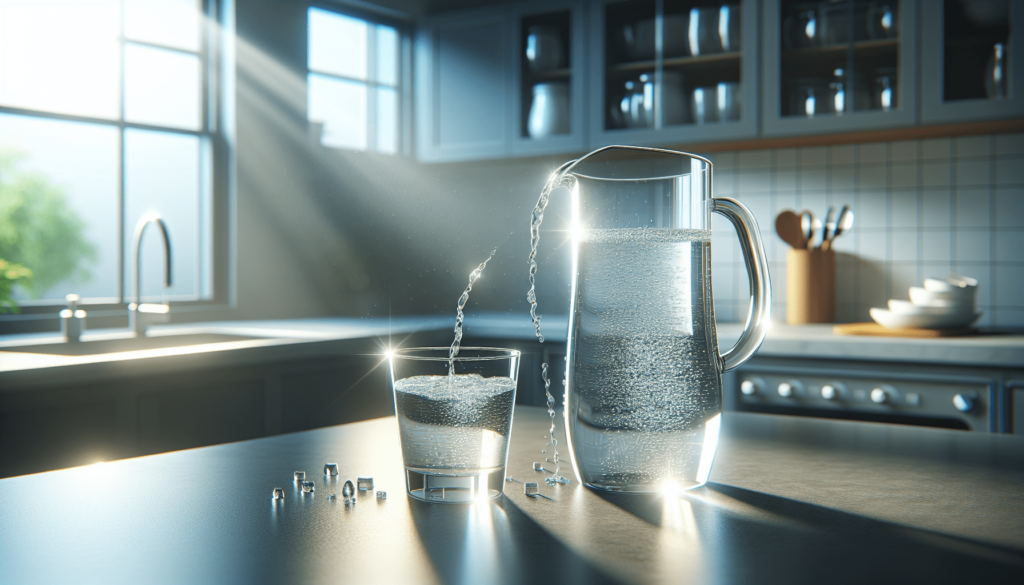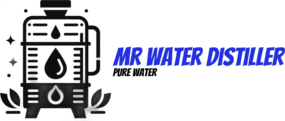Do you ever find yourself wondering about the quality of the water flowing from your taps? As a homeowner, it’s crucial to understand what’s in your water to ensure the well-being of your household. Water quality reports can seem daunting at first glance, filled with technical jargon and numbers. However, understanding these reports is simpler than you might think and can provide you with critical information about your home’s water supply.

What Is a Water Quality Report?
A water quality report, often referred to as a Consumer Confidence Report (CCR), is an annual document that public water systems must provide to their customers. This report details the quality of your drinking water, including information on pollutants, contaminants, and the levels of various substances present in the water.
Why Are Water Quality Reports Important?
Water quality reports are vital because they:
- Inform you about the safety and cleanliness of your drinking water.
- Help you understand potential health risks associated with your water supply.
- Provide transparency regarding any violations of water quality standards.
- Enable you to make informed decisions about water treatment solutions for your home.
Reading a Water Quality Report
Reading a water quality report can be intimidating, but breaking it down into smaller sections makes it more manageable. Here are some key elements typically present in these reports and what they mean for you:
Source of Your Water
The report usually begins by identifying the source of your water. This can be surface water (such as rivers, lakes, and reservoirs) or groundwater (wells). Understanding the source gives you context for the types of pollutants or contaminants that might be present.
Detected Contaminants
Contaminants are typically divided into categories such as microbial contaminants, inorganic contaminants, pesticides and herbicides, organic chemical contaminants, and radioactive contaminants. Here’s a breakdown:
- Microbial Contaminants: Bacteria and viruses that may come from sewage treatment plants, septic systems, agricultural livestock operations, and wildlife.
- Inorganic Contaminants: Salts and metals, which can be naturally occurring or result from urban stormwater runoff, industrial or domestic wastewater discharges, oil and gas production, mining, or farming.
- Pesticides and Herbicides: Chemicals used in agriculture, urban stormwater runoff, and residential uses.
- Organic Chemical Contaminants: Synthetic and volatile organic chemicals, which are by-products of industrial processes and petroleum production, and can also come from gas stations, urban stormwater runoff, and septic systems.
- Radioactive Contaminants: Naturally occurring or resulting from oil and gas production and mining activities.
Understanding the Numbers
Water quality reports often contain tables filled with data. Here’s a primer on some key metrics you might encounter:
| Term | Definition |
|---|---|
| MCL (Maximum Contaminant Level) | The highest level of a contaminant that is allowed in drinking water. |
| MCLG (Maximum Contaminant Level Goal) | The level of a contaminant in drinking water below which there is no known or expected risk to health. |
| MRDL (Maximum Residual Disinfectant Level) | The highest level of a disinfectant allowed in drinking water. |
| MRDLG (Maximum Residual Disinfectant Level Goal) | The level of a drinking water disinfectant below which there is no known or expected risk to health. |
| AL (Action Level) | The concentration of a contaminant which, when exceeded, triggers treatment or other requirements. |
| TT (Treatment Technique) | A required process intended to reduce the level of a contaminant in drinking water. |
Understanding these terms can help you interpret whether the detected levels of contaminants are within safe boundaries as set by regulatory agencies.
Report Violations
If any violations of water quality standards have occurred, the report should clearly state them, explaining the nature, potential health effects, and corrective actions taken. Violations might include exceeding contaminant levels, failures in treatment processes, or lapses in monitoring and reporting.
Health Information
Certain sections of the water quality report may be dedicated to providing health information, especially for vulnerable populations, such as immunocompromised individuals, the elderly, and infants. This section is vital for understanding any specific risks that contaminants may pose to you and your family.
Contact Information
Your water quality report will typically include contact information for the water supplier, offering you a direct line to ask any further questions or express concerns.
Common Contaminants in Drinking Water
Knowing common contaminants and their sources can help you understand the potential risks in your drinking water. Here’s a closer look at some typical contaminants you may encounter:
Lead
Lead typically enters the water supply through corrosion of household plumbing systems or erosion of natural deposits. High levels of lead can cause serious health problems, particularly for pregnant women and young children.
Chlorine
Chlorine is commonly used to disinfect water. While it effectively kills harmful bacteria and viruses, excessive chlorine can result in a strong taste or smell and may have long-term health effects.
Nitrates
Nitrates often come from agricultural runoff, including fertilizer use and contamination from septic systems. High nitrate levels are particularly concerning for infants and can lead to conditions like methemoglobinemia, or “blue baby syndrome.”
Arsenic
Arsenic can be found naturally in the earth’s crust and can enter the water supply through natural deposits or industrial and agricultural pollution. Long-term exposure to arsenic can lead to severe health issues, including cancer.
Radon
Radon is a naturally occurring radioactive gas that can dissolve into groundwater. While radon levels are more commonly a concern in the air, it’s also crucial to monitor its presence in drinking water.
Protecting Your Home’s Water Quality
Once you have a clear understanding of your water quality report, you can take steps to ensure the continued safety and cleanliness of your home’s water. Here are a few practical actions you can consider:
Regular Testing
Even if you receive a water quality report annually, additional testing can provide peace of mind, especially if you have a private well or suspect contamination. Home test kits are available, and many laboratories offer comprehensive water testing services.
Water Filtration Systems
Various water filtration systems can address specific contaminants identified in your water quality report. Consider the following options:
| Type of Filter | Suitable For |
|---|---|
| Activated Carbon Filters | Removing chlorine, volatile organic compounds (VOCs), and improving taste and odor. |
| Reverse Osmosis Systems | Effective against nitrates, dissolved salts, and other inorganic contaminants. |
| Distillation Systems | Removing a wide range of contaminants, including heavy metals, bacteria, and viruses. |
| UV Purification | Disinfecting water by destroying bacteria and viruses. |
| Water Softening Systems | Reducing hardness in water caused by calcium and magnesium. |
Routine Maintenance
Ensuring regular maintenance of your plumbing and filtration systems can prevent contamination and better preserve water quality. This includes changing filters as recommended and inspecting pipes and fixtures for corrosion and leaks.
Stay Informed
Stay updated with any local advisories relating to water quality. Your water supplier, local health department, and environmental agencies provide resources and notifications about any potential water quality issues that could affect your home.

Conclusion
Understanding water quality reports involves breaking down complex information into manageable insights that are essential for maintaining a safe and healthy household. By becoming literate in the language of water quality reports, you empower yourself to take proactive steps towards ensuring the purity of your home’s water supply. Whether it’s through regular testing, choosing the right filtration system, or staying abreast of local water advisories, these measures together help safeguard your family’s health.
So, next time you receive your water quality report, you’ll have the know-how to interpret it confidently and take any necessary actions.

